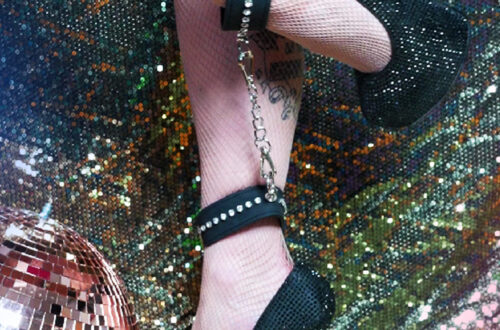The Origins of Micro Fetish
The concept of micro fetishism has been a source of fascination for many individuals, captivating their imagination with its unique blend of aesthetics and psychological intrigue. Rooted in various disciplines, including psychology, sociology, and art history, the origins of micro fetishism can be attributed to a complex interplay of cultural, historical, and artistic influences.
From the intricate dollhouses of 18th-century Europe to the contemporary realm of miniature art and collectibles, micro fetishism has evolved into a multifaceted phenomenon that transcends traditional boundaries of taste and desire. As our understanding of human psychology and emotional expression expands, so too does the scope of micro fetishism, encompassing an array of interests, from doll collecting to tiny fashion, and even the shrinking of everyday objects.
The psychological underpinnings of micro fetishism also warrant exploration, as it is often linked to feelings of nostalgia, comfort, and control. By examining the history, cultural significance, and symbolic meanings associated with miniature objects, we can gain a deeper appreciation for the intricate dynamics at play in this captivating field of interest.
Throughout this article, we will delve into the world of micro fetishism, tracing its evolution, exploring its various manifestations, and investigating the underlying psychological and cultural forces that drive our fascination with the smallest of things. By doing so, we aim to shed new light on a subject that has long fascinated individuals around the globe, revealing the complexities and nuances of this intriguing phenomenon.
Historical Roots in Art and Culture
The concept of micro fetish, which involves an intense fascination with miniatures and shrinking objects, has its roots in various aspects of art and culture.
Art historians have identified several historical periods that contribute to the evolution of this phenomenon. For instance, during the 18th century, the art of miniature painting was highly valued, with tiny works of art created by skilled artists. These miniatures were not only prized for their craftsmanship but also served as symbols of wealth and status. Furthermore, literature has played a significant role in shaping the notion of micro fetishism. The Brothers Grimm’s fairy tales, such as “Hansel and Gretel” and “Rumpelstiltskin,” feature characters who are often miniature or doll-like, which can be seen as early examples of this fascination.
In the realm of art, the Cubist movement of the 20th century also explored the theme of miniaturization. Artists like Pablo Picasso and Georges Braque created fragmented forms that challenged traditional representations of reality. While not specifically focused on miniature fetishism, these works laid the groundwork for future artistic explorations of the theme.
- The rise of toy manufacturing in the 19th century contributed to the proliferation of miniatures as a collectible item. Dollhouses, miniature furniture, and other scaled-down replicas became increasingly popular among the upper class.
- 20th-century avant-garde movements like Surrealism and Dadaism further amplified the appeal of micro fetishism. Artists like Salvador Dalí and René Magritte created works that blurs the line between reality and fantasy, often featuring miniature or doll-like subjects.
Today, the internet has democratized access to micro fetish material, with online communities sharing and exploring this fascination in unprecedented ways. Social media platforms, forums, and specialized websites have given rise to a global network of enthusiasts who share their passion for miniatures, from toy models to dollhouse furniture.
However, it is essential to acknowledge that the obsession with micro fetishism can also be seen as a symptom of societal anxieties about size, scale, and control. As the world becomes increasingly complex, some individuals may find solace in the simplicity and predictability offered by miniature objects or environments. By exploring the historical roots of micro fetishism, we can gain insight into the psychological and cultural forces that drive this fascination.
Psychological Aspects of Micro Fetishism
Micro fetishism, a subset of the broader category of fetish practices, revolves around an intense preoccupation with miniature objects or individuals. This fascination extends beyond mere aesthetics to encompass a complex array of psychological motivations and implications. By examining the underlying dynamics of micro fetishism, it becomes clear that these tiny, often innocuous trinkets or diminutive subjects serve as vessels for deeper desires, anxieties, and explorations of identity.
The Psychology of Shrinkage and Proportion
Micro fetishism, also known as miniature obsession, is a complex psychological phenomenon where individuals exhibit an intense attraction to tiny objects, people, or situations that are perceived as being significantly smaller than their own. This fascination can manifest in various ways, including collecting small items, creating art with miniature subjects, or even fantasizing about shrinking oneself to experience the world from a smaller perspective.
The psychology of micro fetishism is deeply rooted in the human desire for control and agency. By focusing on small objects or situations, individuals with a micro fetish may feel a sense of mastery and dominance over their environment. This can be particularly appealing in a world where many aspects of life seem overwhelming and chaotic. Moreover, the tiny scale often associated with micro fetishism can provide a sense of security and predictability, as opposed to the uncertainty and complexity of larger objects or situations.
Proportion also plays a significant role in the appeal of micro fetishism. The human brain is wired to respond positively to patterns and symmetries, which are often disrupted by disproportionate objects or situations. This can lead to feelings of discomfort, anxiety, or even attraction. For example, some individuals may find the juxtaposition of a large object with a tiny subject – such as a dollhouse with a miniature person – visually striking or even erotic.
Additionally, micro fetishism can serve as a coping mechanism for individuals dealing with anxiety, stress, or feelings of inadequacy. By becoming enamored with small objects or situations, these individuals may be able to momentarily escape from their real-world concerns and find solace in the controlled environment of their fantasy.
Furthermore, micro fetishism has been linked to various personality traits, such as perfectionism, orderliness, and a desire for detail. Individuals with a micro fetish may be drawn to intricate designs, precise craftsmanship, or meticulous attention to detail, which can provide a sense of satisfaction and completion.
Sociological Influences on Micro Fetish Culture
The world of micro fetish culture has gained significant attention in recent years, with enthusiasts and collectors showcasing their fascination with miniature objects and shrinking fantasies.
This phenomenon transcends traditional notions of fetishism, where the focus shifts from the object itself to the experiences, emotions, and perceptions it evokes. Micro fetish culture is characterized by a range of themes, including nostalgia for childhood toys, fascination with miniature technology, and exploration of boundaries between scale and reality.
The sociological underpinnings of micro fetish culture are multifaceted, drawing on insights from psychology, anthropology, and sociology. This article aims to provide an in-depth examination of the social forces that contribute to the appeal of miniatures and shrinking fantasies, revealing the complex interplay between personal desires, cultural norms, and technological advancements.

The Impact of Media and Technology
The fascination with micro fetish culture has been on the rise, particularly in recent years, as people become increasingly enthralled by miniature objects, shrunk versions of everyday items, and other small-scale fetishes. This phenomenon is not isolated to any one particular culture or society, but rather reflects a broader sociological influence that has contributed to its growth.
One significant factor is the democratization of media and technology, which has made it possible for people from all over the world to access a vast array of online content, including fetish communities, social media platforms, and virtual reality experiences. Social media platforms like Instagram, TikTok, and Tumblr have become breeding grounds for micro fetish culture enthusiasts, where they can share their interests, discover new content, and connect with others who share similar passions.

Media and technology also enable the creation of highly detailed and realistic miniature models, which has further fueled the fascination with micro fetishes. Online marketplaces like Etsy and eBay have made it possible for people to buy and sell these miniatures, providing access to a global market that caters to specific interests.
Additionally, sociological factors such as anonymity, escapism, and playfulness are all contributing to the growth of micro fetish culture. The internet provides a platform for individuals to explore their fantasies and desires without fear of judgment or repercussions, allowing them to engage in activities that may be considered taboo or socially unacceptable in mainstream society.
Furthermore, the increasing accessibility of technology has also led to the rise of virtual reality (VR) experiences that simulate miniature environments. These immersive experiences have enabled people to explore their fantasies in unprecedented ways, providing a new level of interaction and engagement with micro fetishes.
Lastly, the influence of anime, manga, and Japanese pop culture on micro fetish culture should not be underestimated. The popularity of shows like “Panty & Stocking with Garterbelt” and “Dead or Alive” has introduced many viewers to the concept of miniature fetishes, and the subsequent growth of online communities dedicated to these interests.
The impact of sociological influences on micro fetish culture is multifaceted and far-reaching. As technology continues to advance and social media platforms evolve, it’s likely that this fascination will only continue to grow, providing new opportunities for exploration and expression for those who participate in this unique and fascinating subculture.
Clinical Perspectives on Micro Fetishism
The realm of micro fetishism is a complex and multifaceted phenomenon that has garnered significant attention in recent years. This fascination with miniatures, shrinking fantasies, and the often-detailed, miniature versions of everyday objects or bodies, raises important questions about the nature of desire, identity, and the human experience.
Potential Psychological Causes and Consequences
Clinical perspectives on micro fetishism, also known as miniature fetishism or small object fetishism, suggest that it is a complex psychological phenomenon driven by various factors.
Research suggests that individuals with micro fetishistic tendencies often exhibit a preoccupation with objects of a very small size, such as dolls, miniature furniture, or tiny clothing. This fascination may be linked to an unconscious desire for control and comfort in a chaotic world, as the miniaturized objects provide a sense of order and familiarity.

Some clinicians argue that micro fetishism may be a manifestation of an underlying attachment disorder, where the individual seeks comfort and reassurance from small, contained objects. Others propose that it is related to a need for intimacy and closeness, which is fulfilled by the tactile experience of touching and handling these miniature items.
Conversely, micro fetishism can also have negative psychological consequences, such as social isolation and anxiety. Individuals with these tendencies may struggle to form intimate relationships due to an excessive focus on small objects, leading to feelings of loneliness and disconnection from others.
Furthermore, the pursuit of micro fetishes can lead to obsessive behaviors, such as collecting and hoarding miniature items, which can disrupt daily life and relationships. In extreme cases, this fixation may even interfere with an individual’s ability to engage in other activities and maintain employment or social connections.
Real-World Expressions of Micro Fetish Culture
In the realm of fetish culture, there exists a fascinating subcategory that has gained significant attention in recent years – micro fetishism. This phenomenon revolves around an intense fascination with miniature objects, sizes, and proportions. From dollhouses to toy cars, and from petite clothing to diminutive art installations, micro fetish culture has given rise to a unique blend of aesthetics, sensuality, and psychological intrigue.
The Artistic and Creative Aspects of Micro Fascination
Micro fetish culture has given rise to various expressions in the real world, reflecting the creative and artistic aspects of this fascination. One notable example is the art of miniature dollhouses, where craftsmen meticulously recreate miniature versions of everyday environments, often with intricate details and furnishings. These tiny abodes can range from charming, whimsical creations to elaborate, realistic replicas that blur the lines between scale models and actual homes.

Another manifestation of micro fetish culture can be found in the realm of jewelry design, where artisans create intricate, miniature-sized accessories that cater to collectors seeking unique and exotic trinkets. These tiny treasures often feature minuscule details, such as delicate filigree patterns or minute gemstones, that are carefully crafted to evoke a sense of wonder and enchantment.
In the realm of fashion, designers have also begun experimenting with miniature silhouettes, creating garments that are deliberately oversized or exaggerated in proportion. This aesthetic is often characterized by elaborate details, such as intricate embroidery or ornate accessories, which serve to amplify the wearer’s fascination with the diminutive.
Discussion and Debate on Micro Fetish Culture
In recent years, a fascinating subculture has emerged, captivating the imagination of many: micro fetish culture. Characterized by an intense fascination with miniature objects, shrinking fantasies, and tiny aesthetics, this niche interest has gained significant attention online and in social circles. As the boundaries between fantasy and reality blur, individuals are drawn to the unique allure of tiny details, intricate craftsmanship, and the symbolism associated with minuscule forms.
Social Acceptance, Stigma, and Perceptions
Discussion and debate surrounding micro fetish culture has sparked intense conversations about social acceptance, stigma, and perceptions.
At the forefront of these discussions is the phenomenon of micro fetishes, where individuals are drawn to miniaturized objects or scenarios. This fascination raises questions about the human psyche’s capacity for obsession and the boundaries of desire.
A significant aspect of micro fetish culture is its relationship with social norms and expectations. Many people view miniature objects as childish or immature, yet enthusiasts argue that these tiny creations can evoke a sense of wonder and intimacy. This paradox highlights the complex interplay between societal standards and individual preferences.
Stigma surrounding micro fetishes also plays a significant role in shaping public perceptions. Those who indulge in micro fetish culture often face ridicule or judgment from outsiders, leading to feelings of shame or guilt. However, proponents of micro fetishes argue that this kind of stigmatization only serves to fuel their interests and create a sense of community among like-minded individuals.
Perceptions of micro fetishes are further influenced by media portrayals and cultural representations. The proliferation of miniature-themed products, from dolls to dollhouses, has helped normalize the aesthetic associated with micro fetish culture. Nevertheless, the line between artistic expression and explicit content often remains blurred, leaving some critics questioning the intentions behind these creative endeavors.
Moreover, micro fetishes challenge traditional notions of beauty and attraction. By valuing tiny objects or bodies over their larger counterparts, enthusiasts are subverting conventional standards of what it means to be desirable. This shift in perspective underscores the diversity of human experiences and desires.
Further exploration of micro fetish culture is essential for dispelling misconceptions and promoting a more nuanced understanding of this multifaceted phenomenon. By engaging with diverse perspectives and experiences, we can work towards greater social acceptance and inclusivity, allowing individuals to express themselves freely without fear of judgment or stigma.
Explore Creative Conceptions for exciting and innovative toys at Peaches and Screams Buy nipple suckers and pumps for exciting sensations at Peaches and Screams Explore Bondage Leather Restraints for thrilling BDSM play at Peaches and Screams Shop Lifesize Dolls for lifelike and intimate experiences at Peaches and Screams Find hen party gifts for a memorable celebration at Peaches and Screams Discover standard vibrators at Peaches and Screams Explore silicone sex lubes for long-lasting slickness at Peaches and Screams
Ring of the Reeks Cycle Cycle for Azaylia Couture Lust Critic Forever Super Sleep Yoga
- Nefertiti Neck Lift Treatment Near Pyrford, Surrey - December 26, 2024
- New Patient Treatment Near Epsom, Surrey - December 25, 2024
- Micro Fetish: The Fascination With Miniatures And Shrinking Fantasies - December 23, 2024




